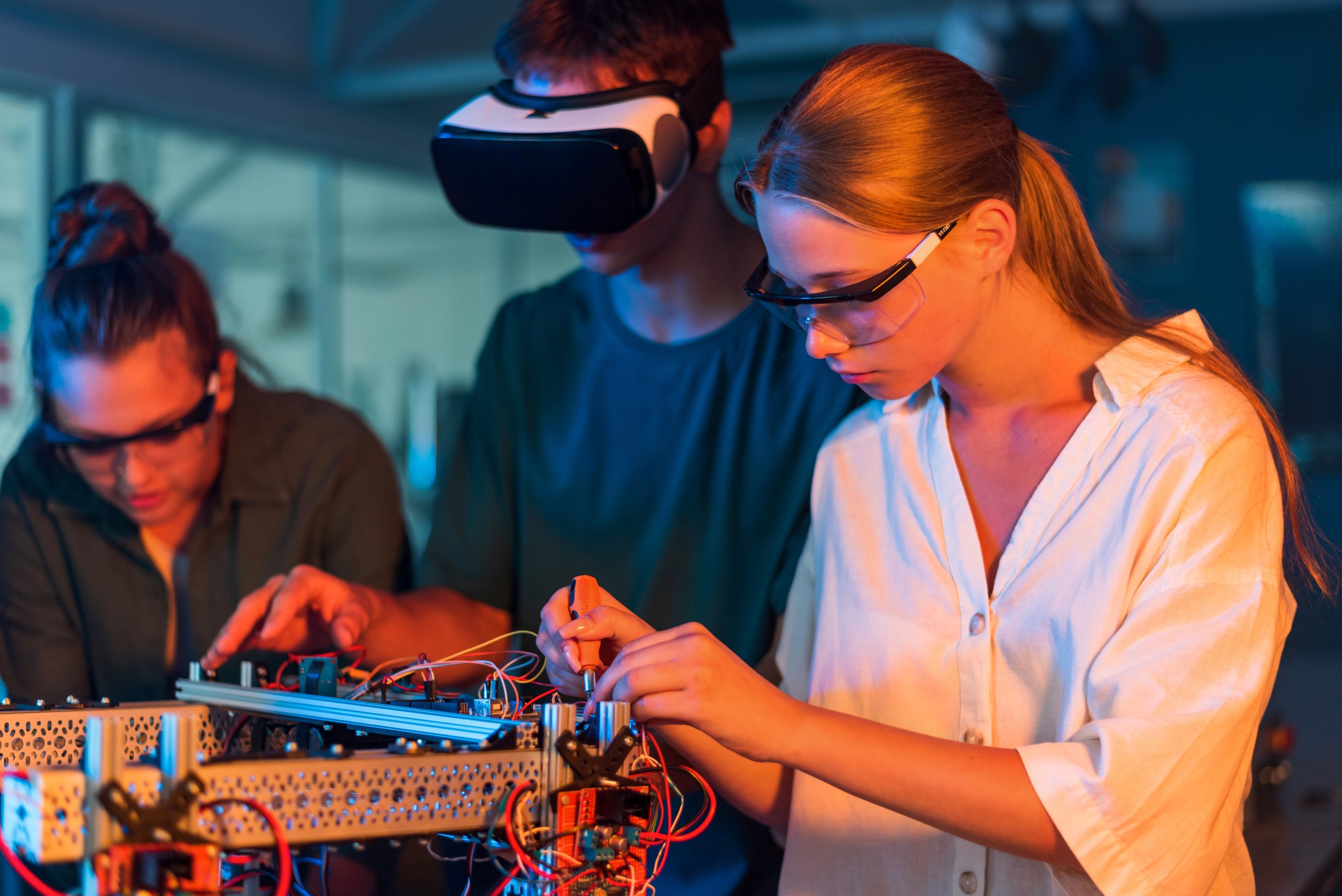One sector that disrupted the world economy is Railways. Over the years, it has become so competent that it has transformed the way we move. We have not only graduated from steam engines to diesel engines to electric trains but are also looking at futuristic technologies like the Hyperloop, a futuristic train concept that could travel at more than 1000 km/h with renewable energies. More than a year ago, SpaceX (Elon Musk’s company) launched a competition in which the team Hyperloop UPV, won the prizes for “Top Design Concept” and “Best Propulsion Subsystem. The Hyperloop creates a loop of career options in rail engineering from operations to product design to mechanics of railway.
Back home, in India with general elections just a year away, the railways has set monthly targets for the completion of its major projects with an aim to finish work in time for the country to go to polls in 2019. In a letter sent to all 16 zones, Railway Board Chairman Ashwani Lohani set such targets for zonal railways for timely commissioning of new lines, gauge conversion and doubling projects announced in the budget this year.Needless to say, the timely commissioning of these projects calls for meticulous planning in respect of preparatory works and also the need for qualified engineers who can translate the dream projects into reality.
Who are Railway Engineers?
The railway engineers look after the works like bridge construction, permanent way development, Signal and interlocking, Fittings and fastenings, etc. They are the ones who maintain and develop the efficient engineering systems and solutions in an integrated manner.
As a railway engineer, you’ll have a wide range of jobs, which will include building new engines and carriages,fitting out new carriages with upholstery, lighting, control panels and communication systems,inspecting bodywork, roofs and under-carriages for wear and tear or damage,repairing or replacing parts,making new parts,carrying out regular maintenance checks on systems such as brakes and couplings,taking apart and testing mechanical, electrical and pneumatic systems besides writing reports and updating maintenance records.
What is Railway Engineering?
Railway Engineering is a multi-pronged discipline, dealing with the design, construction, production and operation of all types of a railway system. It encompasses a wide range of engineering disciplines, including Civil Engineering, Mechanical Engineering, Electrical Engineering, Electronics and Telecommunication Engineering, Computer Engineering, Industrial Engineering and Production Engineering. It covers many other sub-disciplines of engineering and management. There is an urgent need for having a specialized group of Railway Engineers capable of dealing with the unique problems associated with railways.
Institute scape:
Sir Padampat Singhania University Udaipur, Rajasthan has pioneered to introduce a 4-year B.Tech degree programme in Rail Transportation Engineering interweaving the relevant contents of Civil Engineering, Mechanical Engineering, Electrical Engineering, Electronics & Communication Engineering & Computer Science & Engineering. A graduate from this discipline will have career opportunities in Indian Railways & its associates as well as in large number of ancillary industries, both private & public sector. The knowledge gained from this programme will also provide enough confidence to start-up entrepreneurial ventures
Programme Objectives
- To impart knowledge in relevant fields so that the students are acquainted with all aspects of rail transportation.
- To complement the theoretical knowledge through laboratory practices as well as industrial exposures in India & abroad.
- To apprise students about the laws & regulations governing railway professionals & to make them aware about their ethical & societal responsibilities.
- To introduce the component of research so that the students having proper attitude can pursue research as a career.
Eligibility
- Pass in 10+2 Science from a recognised board (Preferably above 60%)
Across the globe:
Sheffield Hallam University, UK offering 3 year B.Sc in Railway Engineering( Hons)
University of Birmingham, UK offering 3 year B.Sc in Electrical and Railway Engineering
University of Illinois, Railway Engineering M.Eng
Manchester Metropolitan University, offering M.Sc in Rail Engineering
Career Pathways:
There are various jobs after Railway engineering. Some of them are:
Senior Section Engineer
Sr. section engineer is the post under railways who looks after the permanent way development, signaling system, wagon wheel etc. the exam is conducted by the railway recruitment boards of various regions.
Train light Engineer
This is a separate and challenging department under the engineering head of the railways, which deals with the train light development and maintenance.
Truss Engineer
For the development of the stations and for the building of various superstructures around the bridges, truss engineers are employed to the site. This job offers you the heavy but smart working conditions.
Surveyor
Railway engineering works are totally based on the surveys conducted by the surveyors. Thus surveyors in the railways are assigned the tedious tasks and hence are highly paid with other railway facilities.
Junior Engineer
Junior engineer is the common post inside the railways in various heads like Water treatment plant, Permanent way, Signals, and interlocking, etc.
Quality Control:
You can beef up your degree with artificial Intelligence and get into a Quality Control role. While Indian Railways is already using this technique to detect flaws or problems in the signalling system, the national transporter will now reportedly use artificial intelligence (AI) to control air circulation, signages, supervision and maintenance work in the 10.28 km-long tunnel in Imphal, the capital of Manipur. The Artificial Intelligence system will control air circulation and alert the passenger in case of fire. AI will help the Indian Railways in taking care of management and maintenance. It will also help run trains safely through the tunnel. The AI will track circuits, monitor signals, axle counters and their sub-systems of interlocking. Besides that power supply systems, timers collect the data on a predetermined interval and send them to a central location. AI technology would help you collect and analyse data on tunnels. To predict future tunnel deterioration patterns and corresponding maintenance needs, the results of this data can then be evaluated.
Virtual Ticketing
Ticketing has been amongst the most innovative areas within rail and metro, perhaps most visible in smart-card systems overtaking paper tickets in a growing number of the world’s transport networks. The next development could well be Virtual Agents, essentially an at station computer offering a combination of ticket office, vending machine and call centre. A passenger using the Virtual Agent is able to talk a ‘real person’ in ‘real time’ offering a similar experience to being a the ticket window except over a video link. The ticket agent you speak to would be likely at a central ticket office hub.For rail companies this would enable a central pool of staff to be deployed across the network and be able to be focussed at certain peak times. It would also potentially offer the opportunity to offer ticket advice in different languages and even link staff from quiet stations into helping at busier stations at peak times. For passengers it offers a human contact but also the immediacy and speed of a ticket machine.
The Road Ahead:
With passenger numbers generally increasing and demands and expectations changing, the need for a railway engineer increases and offers a lot of potential. Ensuring that large numbers of travellers can move freely and efficiently to, through and from a station is essential to maintaining the operational effectiveness of the transport system as a whole.
Station developments now consider ergonomic and human factors, in particular looking in a scientific way at people and their needs, and then providing analytical evidence based on psychological, behavioural and physical factors to improve experiences. For example, in the development of stations experts can be used to analyse passenger movement and behaviour and then plan the station layout to encourage them to do the things you need them to do, for example travelling one the correct side of the escalator or arriving at gate lines with their tickets ready. Other areas of growth in this sector including the development of new technologies and smart ticketing and also the place for retail and catering opportunities within the station.
With the advent of new technologies and the developments that are taking place all over the world, there is a dire necessity of having more institutions in India, fully devoted to this particular discipline of Railway Engineering, so that well qualified, competent manpower is available to take up the challenges including speed, vibration, track renewal, maintenance, signaling, structural analysis and design, coupled with efficient and effective management of the railway system in its totality.
Once you step in the right institution, your career would be on the right track.












